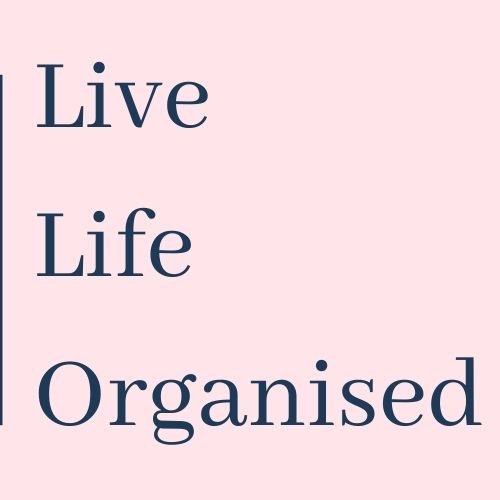5 Common Decluttering Mistakes to Avoid
Embarking on a decluttering journey can be both liberating and daunting, filled with highs and lows. As someone who has navigated the decluttering process, I've learned valuable lessons from the mistakes I've made along the way. So today I am sharing five common decluttering mistakes - yes, I made all of these. Hopefully the lessons I learned will be helpful for you on your decluttering journey.
1.Purchasing Storage Items Prematurely:
In the initial stages of organisng my home, I fell into the trap of purchasing storage items too soon. The market is flooded with attractive baskets and boxes, luring us with their designs and promises of a more organised space. Yet, this approach led to a premature investment in storage solutions that, as it turned out, were not necessary.
As I worked through my decluttering process, I uncovered a variety of boxes and containers that I already owned and could repurpose for storage.
The true extent of what I needed for effective storage became clear only after I had thoroughly decluttered, assessed and organised my items. Many of the containers I had bought on impulse remained unused, failing to meet the specific requirements of my newly organised space. What a waste of money!
Lesson learned: Pop that credit card back in your wallet. Hold off on buying storage solutions until you know exactly what you need.
2. Decluttering by Location Instead of Category:
For many years I decluttered by location, tackling one drawer or a room at a time. On reflection what I would often do is simply move things from one drawer to another, or box things up and put them in another room. And of course, this was a classic rookie error of not confronting my possessions and dealing with them. It is critical to engage in mindful decluttering, which involves being present during the process and making conscious decisions about each and every item. Deciding what to keep and what to let go.
Using a location approach also meant I never really gained an understanding of the volume of each category of items. It wasnt until I brought all of the items of one category together, that I was confronted by the volume.
Lesson learned: As a Certified KonMari consultant I recommend decluttering by category, which allows for a more thorough decluttering process. Download my Essential Decluttering Checklist for your home.: Free Checklist
3. Holding onto Items due to psychological reasons:
It is important to take the time to understand the reasons why you are holding on to items. For instance, items might represent unfulfilled dreams, serve as comfort objects, or offer a false sense of security. Or perhaps you feel guilty as you spent a lot of money on the items. Take the time to reflect on the emotional ties you have withyour possessions and how these affect your decluttering efforts.
I personally found myself clinging to items due to guilt over money spent. I had a lot of clothes, still with tags on them. Guilt is not a reason to keep items. I came to the realisationn that the money was gone. Holding onto these items only added to the clutter and didn't serve me in the long run.
Lesson learned: Learning to let go of items, regardless of their emotional or monetary value, was a crucial step in my decluttering journey.
4. Underestimating Emotional Attachments:
It is a tough process to do the intropsective work to understand your attachments, I confess, initially, I didn't consider myself oversentimental. However I underestimated the emotional attachments I had to belongings. This made it challenging to let go of items that no longer served a purpose. The photo below is an example of items I discovered were sentimental. Who would have thought that a bunch of chooks could be sentimental. I am still working through the chooks!
Lesson learned: Acknowledge and address emotional attachments to belongings, and practice letting go of items that no longer bring joy or serve a practical function.
Turns out my “chook” collection includes sentimental items.
5. Not Setting Realistic Expectations:
Lastly, one of the mistakes I made was not setting realistic expectations for the decluttering process. Often underestimated, decluttering is not just a physical task but an emotional one as well, demanding considerable time and effort.
Initially, I had the illusion that I could swiftly organise my entire home. This misconception led to a cycle of frustration and disappointment, as the reality of the task at hand did not align with my expectations. My progress was frequently interrupted by feelings of being overwhelmed, which sometimes resulted in complete halts and a tendency to abandon the effort altogether. Consequently, this approach extended the duration of the decluttering process far beyond what I had anticipated.
Lesson learned: Setting achievable goals and acknowledging that decluttering is a gradual process helps you stay motivated and focused less. It’s crucial to understand that decluttering is not a race but a marathon.
Embarking on a decluttering journey is a journey of self-discovery and growth. By recognising and avoiding these common decluttering mistakes, you can streamline your decluttering process. You might even save yourself some money, time and unnecessary stress and frustration. Feel free to share below some mistakes you've encountered during your decluttering process.
Happy decluttering!
Mel x
PS If you're seeking guidance and support to navigate each step of your decluttering journey, then my 12-week online coaching program was tailor-made for YOU! From envisioning your ideal lifestyle to systematically decluttering and organising every corner of your home, this program empowers you to reclaim space, time, and energy. Gain the confidence to release items you've been holding onto and embark on a transformative journey towards a clutter-free life. Find out more here: Declutter Your Home and Life Program


